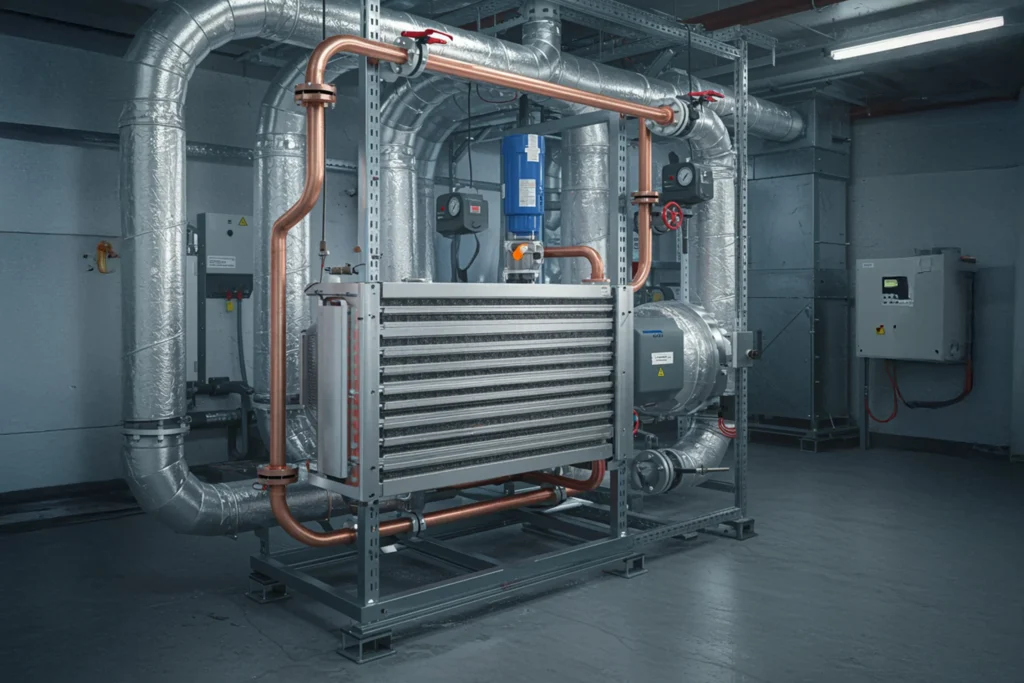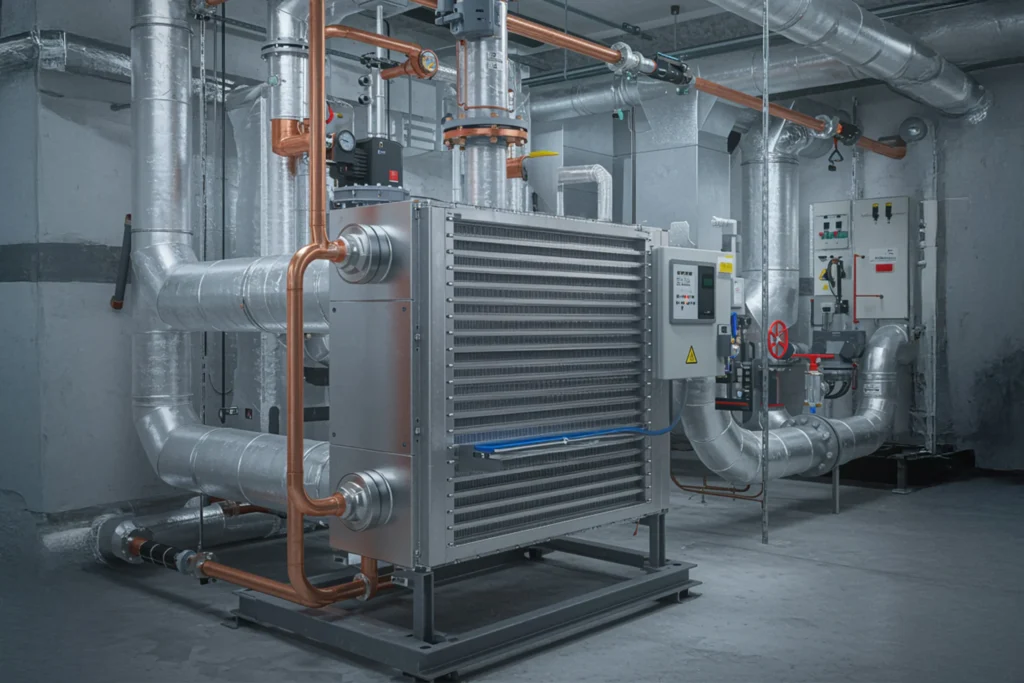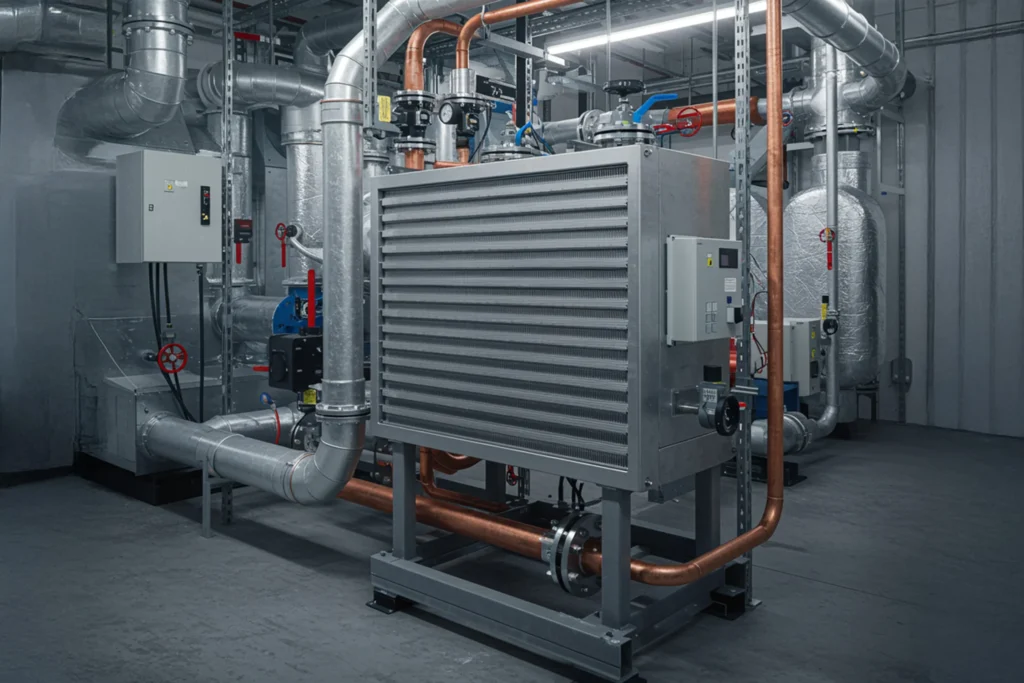HVAC Systems
What are Brazed Plate Heat Exchangers (BPHE)?
The Role of BPHEs in HVAC Systems
Importance of Thermal Efficiency in HVAC Systems
High-efficiency BPHEs facilitate rapid and effective thermal exchange, minimizing the energy required to achieve and maintain desired temperature conditions. In systems where BPHEs are optimized, this directly translates to reduced operating costs and tangible long-term energy savings.
Thermal efficiency enhances the system’s ability to react to changing temperature demands. Whether it's a cold snap or a sudden heatwave, an HVAC system equipped with a high-efficiency heat exchanger can adapt more quickly to maintain indoor comfort.
BPHEs provide a rapid response due to their compact plate configuration, which enables quick thermal exchange and reduced system lag.
Efficient heat transfer reduces the strain on HVAC components such as compressors, pumps, and fans. When heat is transferred quickly and effectively, these components don’t have to work as hard or run as long to maintain desired indoor temperatures.
Over time, this reduced workload leads to fewer breakdowns, lower maintenance requirements, and longer service life for the entire system.
While heat exchangers don’t directly impact air movement, their efficiency indirectly improves the comfort and consistency of indoor temperatures.
By enabling faster and more accurate heating or cooling, BPHEs help prevent temperature swings and hot or cold zones that can result from sluggish heat transfer.



Benefits of AlorairCoil’s Brazed Plate Heat Exchangers
AlorairCoil’s BPHEs feature a fishbone corrugated design, enhancing turbulence while keeping pressure drop to a minimum. This achieves heat transfer efficiencies of up to 99%, allowing HVAC systems to reach desired temperatures quickly and operate with greater energy efficiency.
Space is often a critical constraint in HVAC design, especially in retrofit or urban applications.
BPHEs are remarkably compact compared to shell-and-tube or gasketed plate exchangers, which makes them ideal for integration into limited or modular spaces. AlorairCoil’s slim profile and stackable design allow for flexible installation configurations, even in confined mechanical rooms or behind panels within HVAC appliances.
Traditional heat exchangers with gaskets often require regular inspection, replacement of seals, and downtime for maintenance. In contrast, BPHEs are virtually maintenance-free due to their solid, brazed construction.
With no gaskets or moving parts, the potential for wear and tear is drastically reduced, and regular service intervals are significantly extended. This translates into lower lifecycle costs and increased system uptime.
Efficient heat exchangers like BPHEs open the door to more flexible HVAC system design. Because they are compact yet highly efficient, engineers can incorporate them into systems with tighter spatial constraints or unconventional layouts.
This allows for modular construction, easier retrofitting of older systems, and integration into advanced HVAC technologies like variable refrigerant flow (VRF) systems.
From residential HVAC systems to industrial process cooling, BPHEs are used across a broad spectrum of applications. They are ideal for heating and cooling systems, domestic hot water production, waste heat recovery, and separation of fluid circuits.
Their flexibility and performance make them a go-to solution for engineers and HVAC professionals looking for reliability and adaptability in system design. AlorairCoil’s
How to Select the Right BPHE
Choosing the correct brazed plate heat exchanger is essential for achieving optimal performance, efficiency, and durability. Several key factors must be taken into account during the selection process:

Load Capacity
Calculate the amount of heat transfer needed to ensure that the heat exchanger is capable of handling the required thermal load and maintain system efficiency.

Operating Temperatures and Pressures
Choosing a BPHE with the appropriate tolerance ensures safe and efficient operation while preventing potential failures due to extreme conditions.

Fluid Type and Flow Rates
The type of fluid being processed the heat exchanger’s flow rate capacity affects the performance and longevity of the BPHE.

Material Compatibility
Material selection is vital to prevent corrosion and degradation, particularly with highly aggressive or specialized fluids that may require alternative configurations.

Available Space
Ensuring proper clearance for connections and maintenance access can prevent operational issues and facilitate easy integration into the HVAC system.
